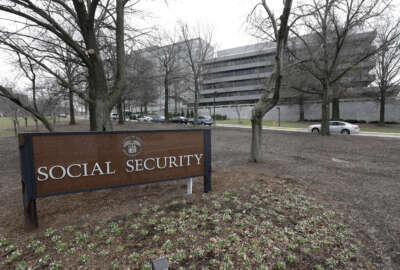
SSA is still closing field offices, despite congressional guidance that says otherwise
The Social Security Administration is planning to close two more field offices this year, despite congressional and oversight guidance that says otherwise.
The Social Security Administration is moving forward with plans to close more field offices, despite congressional guidance that urges the agency to hold off.
Employees at field offices in Arlington, Virginia, and Baltimore, Maryland, received notices that SSA was moving forward plans to close them, according to Witold Skwierczynski, president of the American Federation of Government Employees’ National Council of Social Security Administration Field Operations.
The closures will impact about 20 employees total, including eight interviewers and two managers and supervisors each at both Arlington and Baltimore. The offices are expected to close next month.
Yet the 2018 omnibus, which lawmakers passed in March, advises against more field office closures until the SSA inspector general completes a full review of the decision-making procedures the agency uses.
SSA’s inspector general is currently reviewing the agency’s decisions to close field offices and will evaluate whether it went through the proper channels to inform the public, review feedback and consider consolidation, the 2018 omnibus said.
“While the IG review is ongoing, the acting commissioner should not make any final decisions related to field office locations under review,” a report on the 2018 omnibus read.
In addition, Congress has expressed some concern with SSA field closures in recent years.
SSA has closed 71 field offices since 2010, according to the agency’s inspector general.
“There is significant concern about decisions to close field offices that may not be in accordance with law, regulations and SSA procedures,” the omnibus report says. “These critical decisions must comply with federal law, regulations and procedures to account for the impact such actions will have on the community.”
This won’t be the first time the agency’s IG has reviewed SSA’s process for consolidating or closing field offices. Though SSA said in 2013 it had implemented new procedures for consolidating offices, a Senate Special Committee Aging found the agency “‘could not provide a decision-maker with data needed to make a sound decision’ to justify field office consolidations,” according to a 2015 IG report.
The committee and the IG made five recommendations in 2015, which SSA said it would implement:
- Create a uniform consolidation policy that details who’s in charge for decision making,
- Use standard metrics to review demographics and office locations in area reviews,
- Expand the criteria it considers to more fully examine the impact of closures and consolidations on the affected communities,
- Include the public and stakeholders, including managers, employees and congressional officials in the decision-making process, and
- Consider alternatives for eliminating in-person services and develop a transition plan for impacted communities.
Yet Skwierczynski SSA hasn’t followed the five-step process to announce its decision to close field offices in Arlington and Baltimore. He described the closures as a pure cost-cutting initiative, as the agency continues its push to move more services online.
“The agency … has done all this to save money,” he said. “It’s all about saving money.”
But the 2018 omnibus, which lawmakers passed in March, did give SSA $12.9 billion, an increase of $480 million over the previous year. Lawmakers directed $280 million of that increase toward SSA’s IT modernization initiative and another $100 million to make a dent in the current backlog of disability hearings.
SSA has an IT system that’s badly out of date, but the agency’s field offices served about 42 million visitors last fiscal year, a 5 percent increase since 2015, the omnibus noted.
“The agreement is concerned that SSA may be reducing resources for field offices and expects SSA to continue to support frontline operations,” the omnibus report says. “The high volume of visitors, combined with factors such as complex workloads, shortened public operating hours and staff shortages, have led to increased wait times in both field offices and the national 800 number.”
Customer wait times have slowly gone up over the past seven years. The average wait time ticked up to 25 minutes in fiscal 2017, higher than the 19 minute average in 2010, according to the SSA inspector general.
Copyright © 2024 Federal News Network. All rights reserved. This website is not intended for users located within the European Economic Area.
Nicole Ogrysko is a reporter for Federal News Network focusing on the federal workforce and federal pay and benefits.
Follow @nogryskoWFED





